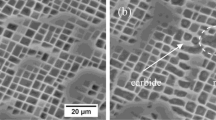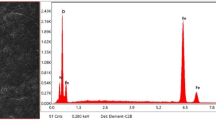The development of high-strength weldable steels has diversified the range of design alternatives subjected to more and more severe operation conditions. An excellent combination of high work-hardening rate and ductility improved the ultimate tensile strength of dual-phase (DP) steels and made them lucrative for application in automotive industry. The paper focuses on HAZ hardening and softening of three automotive DP steels, which affect their mechanical properties and their crack susceptibility, respectively. A Gleeble 3500 thermomechanical simulator was used to simulate the welding thermal cycles for all HAZ subzones that correspond to TIG welding of three DP steels. Steel samples were heated to different peak temperatures (650, 775, 950, and 1350°C) and cooled at two cooling times of 5 and 30 s. The Rykalin 2D model was used for the numerical simulation of this process. The hardness and microstructure of the specimens were then tested and analyzed using Vicker’s hardness test and optical microscope, respectively. In the investigated cooling time range, the HAZ of the examined cold-rolled DP steels was more susceptible to softening than to hardening. The softening occurred in almost all HAZ sub-regions but was the most pronounced in the fine-grained and intercritical HAZ, where we recorded the highest decrease in hardness for all DP steels. With an increase in heat input and longer cooling time, softening occurred in CGHAZ of all three DP steels under study, which can be attributed to the formation of upper bainite.











Similar content being viewed by others
References
A. Wrozyna, M. Pernach, R. Kuziak, and M. Pietrzyk, “Experimental and numerical simulations of phase transformations occurring during continuous annealing of DP steel strips,” J. Mater. Eng. Perform., 25, No. 4, 1481–1491 (2016), doi: https://doi.org/10.1007/s11665-016-1907-9.
J. Lukács, “Fatigue crack propagation limit curves for high strength steels based on two-stage relationship,” Eng. Fail. Anal., 103, 431–442 (2019), doi: https://doi.org/10.1016/j.engfailanal.2019.05.012.
V. Balázs, P. Timothy, and M. Kornél, “Development and comparison of quantitative phase analysis for duplex stainless-steel weld,” Period. Polytech. Mech., 62, No. 3, 247–253 (2018), doi: https://doi.org/10.3311/PPme.12234.
K. Paveebunvipak and V. Uthaisangsuk, “Microstructure based modeling of deformation and failure of spot-welded advanced high strength steels sheets,” Mater. Design, 160, 731–751(2018), doi: https://doi.org/10.1016/j.matdes.2018.09.052.
H. Mohrbacher, M. Spöttl, and J. Paegle, “Innovative manufacturing technology enabling light weighting with steel in commercial vehicles,” Adv. Manuf., 3, No. 1, 3–18 (2015), doi: https://doi.org/10.1007/s40436-015-0101-x.
A. Schrek, P. Švec, and A. Brusilová, “Formability of tailor-welded blanks from dual-phase and bakehardened steels with a planar anisotropy influence,” Strength Mater., 49, No. 4, 550–554 (2017), doi: https://doi.org/10.1007/s11223-017-9898-9.
P. Švec and A. Schrek, “Microstructure and microhardness of fiber laser welded dual-phase steels with high-strength low-alloy steels,” Strength Mater., 49, No. 4, 531–538 (2017), doi: https://doi.org/10.1007/s11223-017-9896-y.
K. Weman and G Linden, MIG Welding Guide, Woodhead Publishing (2006).
R. P. S. Sisodia and M. Gáspár, “Physical simulation-based characterization of HAZ properties in steels. Part 1. High-strength steels and their hardness profiling,” Strength Mater., 51, No. 3, 490–499 (2019), doi: https://doi.org/10.1007/s11223-019-00094-5.
D. R. Askeland, and P. P. Phulé, The Science and Engineering of Materials, Brooks/Cole-Thomson Learning (2003).
C. R. Brooks, Principles of the Heat Treatment of Plain Carbon and Low Alloy Steels, ASM International (1996).
R. G. Davies, “Influence of martensite composition and content on the properties of dual phase steels,” Metall. Trans. A, 9, No. 5, 671–679 (1978).
H. Tervo, J. Mourujarvi, A. Kaijalainen, and J. Kömi, “Mechanical properties in the physically simulated heat-affected zones of 500 MPa offshore steel for arctic conditions,” in: K. Jarmai and B. Bollo (Eds.), Vehicle and Automotive Engineering 2, VAE 2018, Lecture Notes in Mechanical Engineering, Springer, Cham (2018), pp. 779–788.
M. Gáspár, A. Balogh, and I. Sas, “Physical simulation aided process optimization aimed sufficient HAZ toughness for quenched and tempered AHSS,” in: Proc. of the IIW Int. Conf. High-Strength Materials – Challenges and Applications (Helsinki, Finland, 2015).
S. Heikkilä, D. Porter, L. Karjalainen, et al., “Hardness profiles of quenched steel heat affected zones,” Mater. Sci. Forum, 762, 722–727 (2013).
QuikSim TMSoftware, Heat Affected Zone Programming Manual.
N. Rykalin, Heating Processes when Welding [in Russian], Academy of Science, Moscow (1953).
L. Prém, Z. Bézi Z., and A. Balogh, “Development of complex spot welding technologies for automotive DP steels with FEM support,” in: K. Jármai and B. Bollo (Eds.), Vehicle and Automotive Engineering, Lecture Notes in Mechanical Engineering, Springer, Cham (2017), doi: https://doi.org/10.1007/978-3-319-51189-4_36.
P. Tsipouridis, Mechanical Properties of Dual-Phase Steels, Ph.D. Thesis, Technische Universität München (2006).
J. F. Shackelford and W. Alexander, Materials Science and Engineering Handbook, CRC Press LLC, Boca Raton, FL (2001).
R. W. K. Honeycombe and H. K. D. H. Bhadeshia, Steels: Microstructure and Properties, Butterworth-Heinemann, London (1995).
ASTM E384-11e1. Standard Test Method for Knoop and Vickers Hardness of Materials, ASTM International, West Conshohocken, PA (2011).
Acknowledgments
This research was supported by the European Union and the Hungarian State, co-financed by the European Regional Development Fund in the framework of the GINOP-2.3.4-15-2016-00004 project, aimed to promote the cooperation between the higher education and the industry.
Author information
Authors and Affiliations
Corresponding author
Additional information
Translated from Problemy Prochnosti, No. 5, pp. 144 – 155, September – October, 2019.
Rights and permissions
About this article
Cite this article
Gáspár, M., Sisodia, R.P.S. & Dobosy, A. Physical Simulation-Based Characterization of HAZ Properties in Steels. Part 2. Dual-Phase Steels. Strength Mater 51, 805–815 (2019). https://doi.org/10.1007/s11223-019-00128-y
Received:
Published:
Issue Date:
DOI: https://doi.org/10.1007/s11223-019-00128-y




